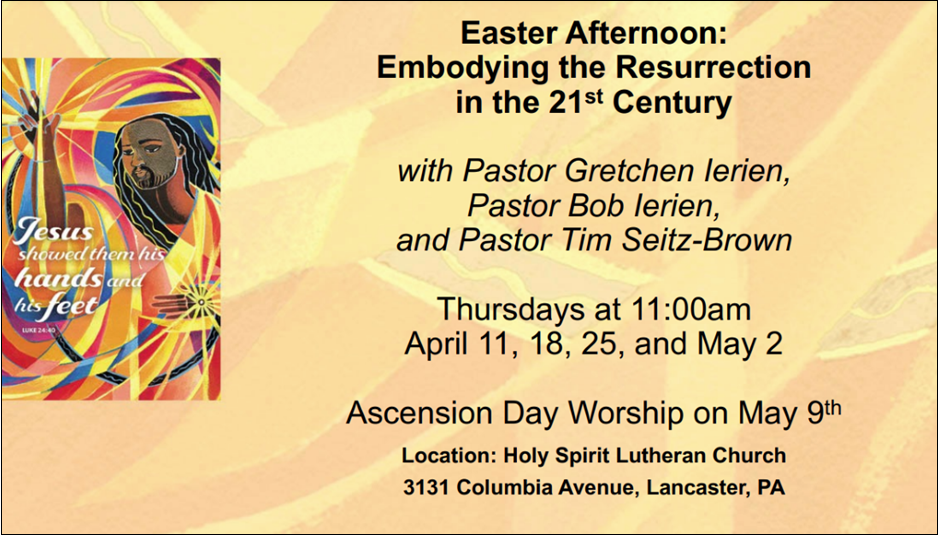
Latest News
Going Green!
Evening of the Arts: Jenkins Shcool
From the Pastor- March 2024
How do you pray? Many of us were taught very little about how to pray. It is something that we picked up along the way as we encountered prayer in worship services. We may have learned a few spoken prayers for bedtime and meals. If we were lucky we had someone who taught us some different ways of praying. But if we are honest, a lot of us feel rather limited in this area.
Some of you may have heard me say before that there is no one right way to pray. There are so many forms of prayer. It is simply how we open ourselves to come near to a God who is already near to us. One way to pray that I have been appreciating this Lenten season is the prayer of Lectio Divina or Divine Reading. St. Benedict is often credited with this sacred form of encountering scripture. But even in Paul’s writings, we have recognition that the Holy Spirit is present in our comprehension.
The goal of Lectio Divina is not to read the text so that it can be studied and the correct interpretation extrapolated. The goal is to read, to meditate, to contemplate, and to integrate the text. It is a way of experiencing the text that allows you to experience the text in a personal way. During our Lenten Wednesday services we engage in a modified form of Lectio. Here I would like to offer to you a more traditional format for your devotional reading.
There are four stages to Lectio Divina.
Prepare for prayer
Before entering into the prayer, prepare yourself physically and mentally. Begin by sitting comfortably, placing both feet on the ground, with posture upright and hands open on your lap as if waiting to receive a gift from God. Then, abandon any agenda, worries or thoughts you bring to this prayer and entrust these things to the providence of God. Ask for the grace to be receptive to what God will speak to you through this Scripture reading.
Read (lectio)
Begin by slowly and meditatively reading your Scripture passage out loud. Listen for a particular word or phrase that speaks to you at this moment and sit with it for a time.
Meditate (meditatio) – Read the same passage a second time. As you re-engage the text, let the word or phrase that stood out become your invitation to dialogue with God. Allow the word or phrase to wash over you and permeate your thoughts and feelings.
Pray (oratio) – Read the text a third time. What is God saying to you in these words? What do you want to say to God? What feelings do these words raise up in you? Share your answers with God.
Contemplate (contemplatio)
Read the text a final time. As you do, release the word or phrase you have been praying with. Be still and rest in God’s embrace. What gift has God given you to take away from this prayer? To what action might God be inviting you? Thank God for this gift and invitation as you conclude your prayer
Holy Week Schedule
Maundy Thursday -March 28th at 7:00 pm: This is the day when Christians remember the Last Supper. At the close of the service the altar and the sanctuary will be stripped in preparation for Good Friday
Good Friday-March 29th at 7:00 pm: This is the day when Christians around the world commemorate the crucifixion of Jesus Christ.
Easter Sunday –March 31st at 9:30 am: This is the day that we as Christians celebrate the resurrection of our Lord and Savior, Jesus Christ.



